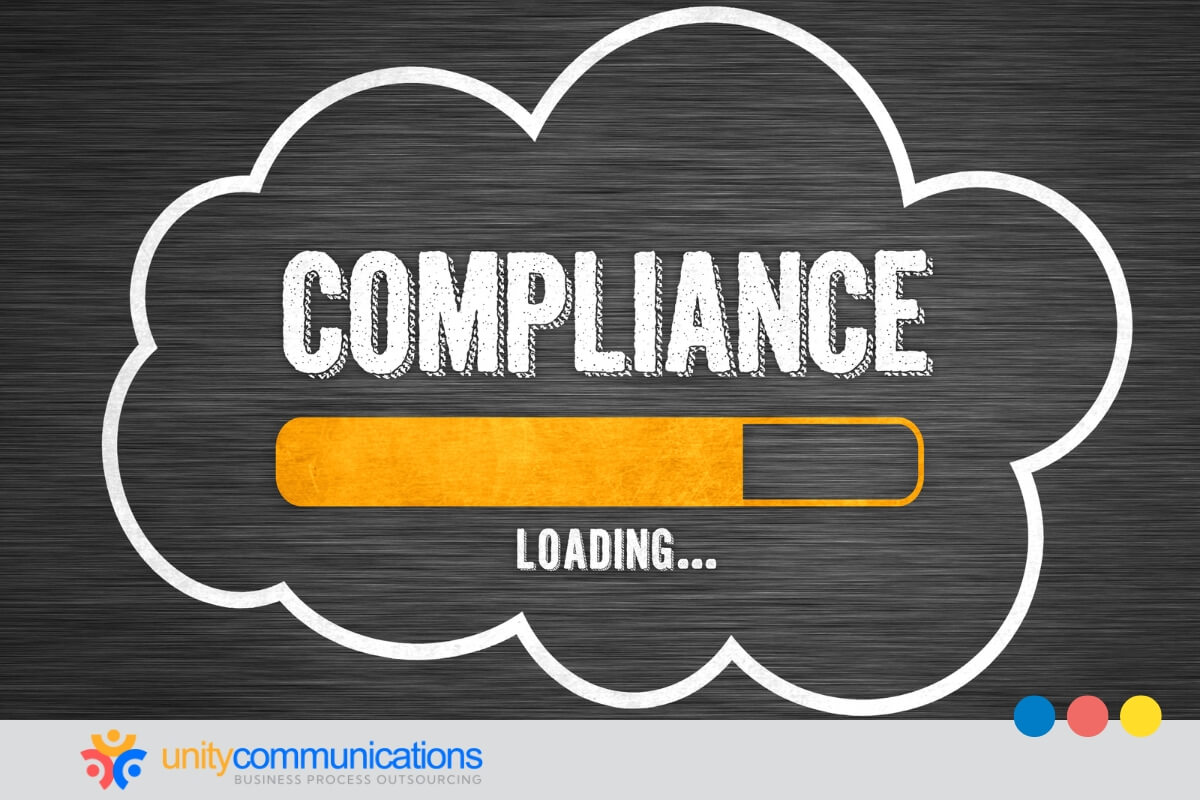Table of Contents
What makes a business succeed with artificial intelligence (AI)? Strategy. What makes an AI agent deliver real results? Implementation.
Just as world-class athletes and musicians rely on disciplined practice, you must approach AI agent implementation with the proper framework to unlock meaningful business outcomes.
This article walks you through 10 essential practices to make implementation effective, sustainable, and aligned with your business goals. You’ll learn how to avoid common pitfalls, optimize performance, and set your AI agents up for long-term success.
1. Define clear objectives and success criteria

Successful AI agent implementation starts with clarity. Before rolling out an agent, you must define what you want it to achieve and how you’ll measure success.
Without a clear purpose, AI projects often stall, resulting in wasted resources and unmet expectations, a common theme in the broader challenges of AI development.
Here’s how you can do it effectively:
- Identify the business problem. Pinpoint the exact process, task, or customer interaction where the AI agent will add value. For example, is your goal to reduce response times, qualify leads, or automate repetitive inquiries?
- Set measurable success criteria. Choose key performance indicators (KPIs) that directly tie back to your goals. It could be first-contact resolution rate, lead conversion rate, or average handling time.
- Define boundaries. Decide what the AI agent will and will not handle to prevent scope creep and ensure your system focuses on high-value use cases.
- Align stakeholders. Involve leadership, operations teams, and IT early so everyone shares the same vision of success.
With well-defined objectives, you create a roadmap that guides design, training, and evaluation. This minimizes risks and helps overcome the common challenges in AI development, such as misaligned expectations and unclear ROI.
2. Choose the right Al frameworks and tools
After getting clear with your objectives, the next step in AI agent implementation is finding the right frameworks and tools. The choice of technology will dictate how smoothly your project runs and how well your AI scales, adapts, and integrates with your existing systems.
A staggering 85% of AI projects fail to meet their objectives. This number shows how poor tool choice, integration mishaps, or governance issues can derail efforts before they yield value.
You should identify the core functionality including natural language processing (NLP), predictive analytics, or workflow automation. Then, consider the operational environment. Answer these questions to narrow down the frameworks that actually fit your requirements.
- Will the agent run on the cloud, on-premises, or at the edge?
- Do you need real-time responsiveness?
- Can the agent work in batch processes?
Next, compile a shortlist of frameworks and tools that align with your objectives. Evaluate each based on specialization and features and assess scalability to ensure the framework can handle expanding datasets and use cases. Check integration capabilities by reviewing application programming interfaces (APIs), connectors, and compatibility with existing systems.
After shortlisting, validate your options through small-scale pilots. You can build prototypes that test real use cases and measure outcomes against KPIs such as error rate, latency, and ease of integration. Push the frameworks under stress conditions, such as high transaction volumes or multilingual queries, to evaluate resilience.
A recent study found that 95% of generative AI implementations produce no measurable profit-and-loss impact because of flawed integration with existing workflows. By moving through the steps above, you can minimize risks.
3. Design agent architecture aligned with your goals
Successful AI agent implementation will depend on how well you design the underlying architecture. You can think of this as the blueprint that determines how your agent perceives information, processes it, and delivers results. A poorly designed architecture can limit scalability and make integration difficult.
The first step is to map your objectives to system components. For example, if your goal is customer support, your architecture should include a natural language understanding (NLU) layer, a dialog management engine, and a connection to a knowledge base.
Next, consider modularity and flexibility. By designing your agent with modular components, such as separate layers for intent recognition, response generation, and data access, you can quickly upgrade or replace parts without overhauling the entire system.
Finally, plan for real-world adaptability. Incorporate feedback loops so the agent can learn from user interactions and refine its responses over time. Build monitoring dashboards that track performance against KPIs, and ensure your architecture supports version control for controlled experimentation.
4. Maintain high-quality, domain-specific training data
In AI agent development, the quality, relevance, and cleanliness of your training data directly determine how well the system performs in real-world conditions. Poor or generic datasets results in inaccurate responses, biased decision-making, and a frustrating customer experience.
The first step is to collect domain-specific data. Consider these examples:
- An AI agent built for healthcare needs training on medical terminology, patient interaction patterns, and compliance standards.
- A financial services agent should understand transaction types, regulatory language, and fraud indicators.
Relying on generic datasets won’t allow the model to perform at the level your customers and business processes demand.
Data preprocessing and cleaning are equally important. Remove duplicates, correct inconsistencies, and normalize formats to ensure your agent learns from consistent examples. This reduces noise and prevents the model from reinforcing bad patterns.
It’s also best practice in AI agent implementation to annotate datasets with high accuracy, since poorly labeled data can misguide the learning process and undermine performance.
Finally, prioritize diversity and fairness in data selection. Include examples from different customer profiles, communication styles, and scenarios to minimize bias and increase adaptability. Build in ongoing retraining cycles so the agent continuously improves as new data becomes available.
5. Implement robust NLU and reasoning

In addition to recognizing keywords, AI agents must understand intent, context, and nuance to deliver meaningful outcomes. This is where NLU and reasoning capabilities come in. Without these, agents risk producing surface-level responses that frustrate users and limit business impact.
Design models that can recognize the design intent behind customer statements and their intended meaning. When a customer says, “I can’t log in,” it could indicate a forgotten password, a system outage, or a permissions issue. An effective NLU system categorizes these variations accurately, ensuring the AI agent takes the right next step.
Next, integrate contextual reasoning. Your AI should remember previous interactions within a conversation and, ideally, across channels. This continuity allows for more human-like engagement and prevents customers from having to repeat themselves, which is a key factor in building trust.
Data readiness is also critical, since NLU systems depend on structured, labeled datasets. According to a global survey, 42% of enterprises report that over half of their AI projects were delayed, underperformed, or failed due to data readiness and pipeline issues. This highlights why you must invest in clean, well-prepared language datasets before deploying their AI agents.
6. Integrate seamlessly with existing systems and workflows
Integration with existing systems and workflows is critical for AI agent implementation to succeed. Integration gives AI agents access to real-time data and ensures they can trigger the right processes and work in harmony with human teams.
Integrations start with identifying where your AI can augment, automate, or accelerate tasks without disrupting established processes. Customer service AI agents should connect directly to your customer relationship management (CRM) systems to retrieve account details, update case notes, and escalate complex issues to human reps. A sales AI agent should integrate with marketing automation and lead scoring tools for smooth handoffs between departments.
You should also prioritize API-driven and modular integrations. These allow the AI agent to plug into multiple systems without requiring major redesigns. Well-structured integrations also support scalability. As your business grows or as you adopt new platforms, the AI agent can adapt quickly.
A hybrid business process outsourcing (BPO) model is helpful in this case. Many struggle with aligning AI systems with existing workflows. By partnering with a hybrid BPO, you get the technical capabilities to configure integrations correctly and the human agents to manage exceptions, handle escalations, and provide oversight.
7. Test for functionality, reliability, and safety
Skipping or rushing this step can lead to breakdowns, ranging from misclassifications in customer queries to failures in integrating with backend systems once the agent goes live.
First, you must define test cases aligned with business objectives. If your agent is designed for customer service, test scenarios should include common inquiries, edge cases, and escalation workflows.
Each test case should tie back to the success criteria established earlier in the process. Next, conduct multi-layered testing:
- Functional testing verifies that the AI responds correctly to expected inputs.
- Performance testing measures response time and scalability under high volumes.
- Integration testing ensures the agent interacts properly with CRMs, databases, and ticketing systems.
- User acceptance testing (UAT) engages real employees or pilot customers to validate usability and satisfaction.
Finally, establish continuous monitoring and feedback loops. AI agents learn and adapt, which means testing isn’t a one-time activity. By tracking metrics such as accuracy, response time, and error rates post-launch, you can identify issues quickly and retrain or adjust models as needed.
8. Optimize AI agent implementation for speed and scalability
Optimizing for speed and scalability is a non-negotiable step in successful AI agent implementation. Customers expect near-instant responses, and you need AI that can handle spikes in demand without crashing
Benchmark system performance under typical and peak loads. Measure response latency, throughput, and resource consumption to identify bottlenecks. These tests reveal whether your AI agent can handle thousands of interactions simultaneously without degradation.
Next, focus on infrastructure choices. For example:
- Cloud-native deployments, containerization, and microservices make it easier to scale up or down as needed.
- Leveraging graphic processing unit (GPU) acceleration or distributed computing can significantly reduce response times for agents handling complex reasoning or large datasets.
Additionally, don’t overlook the efficiency of your data pipeline. Slow data access or poorly optimized workflows can cause delays even if the AI models themselves are fast. Streamline data ingestion, preprocessing, and retrieval processes to maintain responsiveness at every step.
Lastly, implement autoscaling and monitoring mechanisms. Real-time dashboards, alert systems, and automated scaling rules ensure the agent adapts seamlessly to traffic surges, eliminating the need for manual intervention.
9. Build in security, compliance, and ethics

Companies are responsible for collecting and managing data. Beyond regulations, people also expect that AI systems will be transparent, unbiased, and fair.
To get this right, you must embed compliance requirements directly into your AI design and workflows. Incorporate features such as data encryption, anonymization, and access controls from the beginning.
At the same time, implement fairness checks to identify and mitigate bias in training datasets. Documenting decisions regarding data use, model updates, and governance adds a layer of accountability and transparency.
Hybrid BPO helps maintain compliance. If you’ve ever wondered how outsourcing works in this context, think of it as an extension of your governance team. The BPO provides specialized knowledge, security protocols, and continuous monitoring while your AI agents deliver speed and efficiency.
10. Monitor, measure, and iterate continuously
AI agent implementation doesn’t end at deployment. Successful organizations treat launch as the beginning of an ongoing optimization cycle. Other steps they take include:
- Track performance metrics consistently. Monitor KPIs established in step one, such as accuracy rates, response times, customer satisfaction scores, and business outcomes. Set up automated alerts for performance degradation or anomalies.
- Gather user feedback systematically. Collect input from customers and internal teams interacting with the AI agent. Their insights reveal gaps between intended and actual performance.
- Conduct regular model retraining. As business needs evolve and new data becomes available, retrain your models to maintain accuracy and relevance. Schedule quarterly reviews at a minimum.
- Iterate based on data, not assumptions. Use A/B testing to validate improvements before full rollout. Let performance data guide your optimization decisions, rather than relying on intuition alone.
Deployment is day one, not done. Keep a live pulse on your KPIs, gather feedback from customers and teams, retrain on a regular cadence, and validate improvements with A/B tests so data, not hunches, drives every iteration.
Master these 10 practices, and you’ll move beyond simply deploying AI agents to building intelligent systems that adapt, improve, and deliver compounding value for years to come.
The bottom line
AI agents are no longer a futuristic concept. They’re now part of business operations. They will redefine company operations, workforce structure, and customer service. The question is no longer if you should adopt them but how you can adapt while balancing speed, risk, and long-term value.
This is where a hybrid BPO makes all the difference. Hybrid BPO firms, including Unity Communications, help you implement best practices, overcome common pitfalls, and ensure compliance without slowing innovation. We give you the flexibility to scale, the resilience to manage risk, and the expertise to make AI agents work seamlessly in your business.
The smartest move isn’t to wait—it’s to prepare. Let’s connect and turn AI agent implementation into a competitive advantage.




